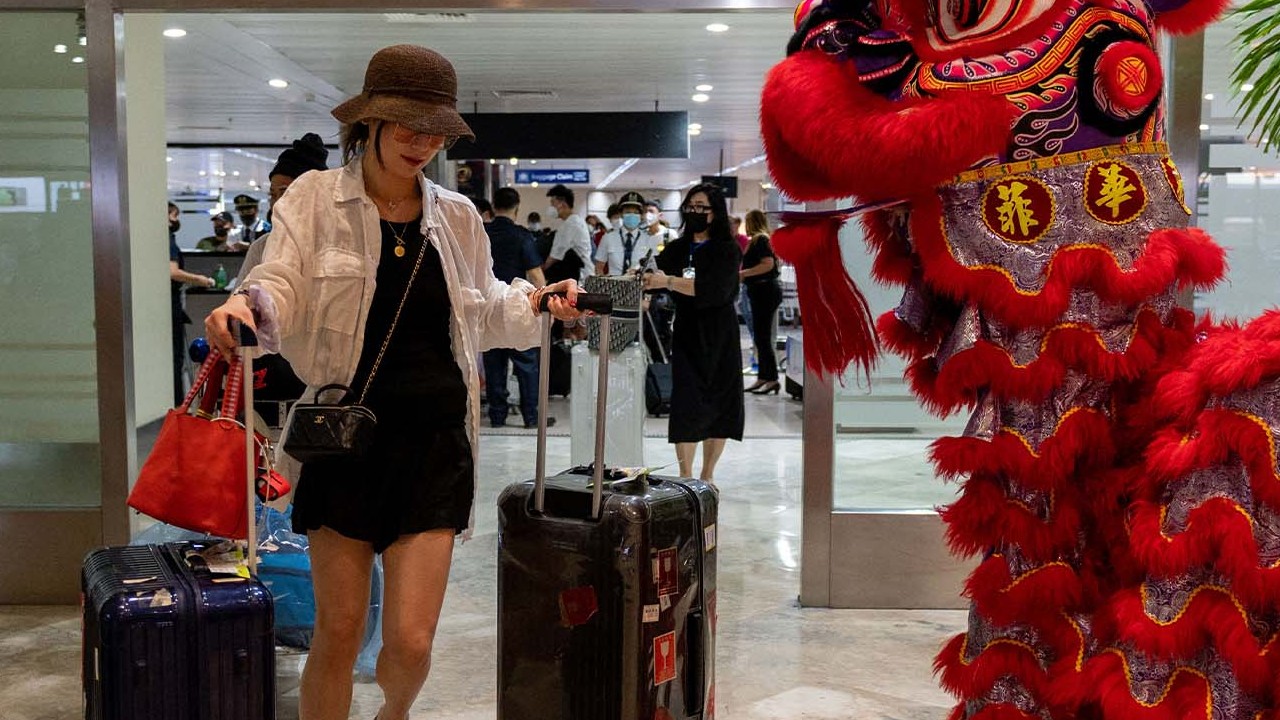
Chinese tourists slowly resuming overseas trips, but Lunar New Year numbers still well down on pre-Covid levels
- More than 2 million foreign trips were made during the Spring Festival holiday, according to the state news agency
- Southeast Asia was the most popular destination this month with low costs and the ease of getting a visa helping to lure visitors
A total of 2.39 million trips were made out of and into China in the first six days of the week-long break, the first since the country lifted its Covid-19 controls, according to the state news agency Xinhua.
The figure marked a 123.9 per cent year-on-year increase compared with last year, but it is still a long way from the 2019 level of over 12 million cross-border trips.
Between January 21 and 26 this year, inbound trips totalled 1.2 million, representing a 127.2 per cent increase from the first six days of the holiday last year, while 1.19 million outbound trips were made, up 120.7 per cent, Xinhua said.
It did not provide statistics on how much Chinese travellers spent on their trips.
Before the Covid-19 pandemic, China was the world’s largest source of outbound tourists, who took 170 million trips and contributed US$253 billion to the global economy in 2019.
According to Ctrip, one of China’s biggest online travel booking sites, cross-border air ticket orders increased fourfold year-on-year during this year’s Spring Festival.
Kent Cai, a travel agent from Zhejiang province, said the main factors for Chinese tourists when choosing a destination were the cost, ease of getting a visa and safety.
Cai, who travelled overseas frequently before the pandemic, is currently visiting Southeast Asia, including cities such as Kuala Lumpur and Penang in Malaysia and Jakarta and Surabaya in Indonesia, as he prepares to restart his business.
Cai said he is trying to meet as many local suppliers as he can during the trip.

“The local cost of food and hotels are still very affordable for Chinese middle class families,” he said.
“Seafood and luxurious hotels in Kuala Lumpur and Surabaya are very attractive, much cheaper than cities in Zhejiang. But to be honest, I didn’t see many tourists from China during the Chinese New Year holiday.”
Most ordinary Chinese would be very cautious when considering a trip overseas after being unable to leave the country for three years, he said.
State-run media has promoted countries such as the Philippines and Indonesia as welcoming destinations for Chinese tourists, and the local government in Bali has staged welcome ceremonies for Chinese visitors at the airport.
This year, Chinese travellers are projected to take 110 million international trips, two-thirds of the 2019 level, according to the China Outbound Tourism Research Institute (Cotri), which provides consulting and training on the Chinese outbound market.
The top 10 places that mainland Chinese travellers would like to visit for 2023 are Hong Kong, Macau, Thailand, Japan, Taiwan, South Korea, Singapore, France, Australia and Russia, according to Dragon Trail International.
The data and marketing agency surveyed over 1,058 mainland Chinese travellers about their plans for 2023.
The report, published earlier this month, predicted the recovery will intensify in the second half of the year with 74 per cent saying they would travel overseas in the summer or later this year.
The key barriers for those who do not intend to travel outside mainland China in 2023 are money and Covid, the survey showed.
Around 54.9 per cent of interviewees cited financial constraints related to Covid, and over half (52-54.2 per cent) worried about risks to their own health and the health of their families.
The inconvenience of applying for travel documents (33.9 per cent), busy schedules at work (37.7 per cent) and safety at their destination also factored into travellers’ decisions to stay at home.



